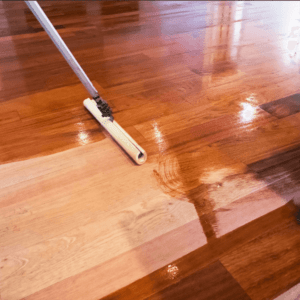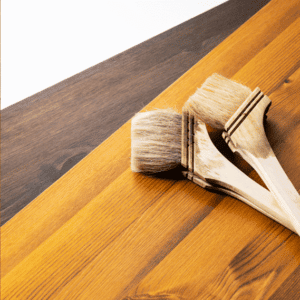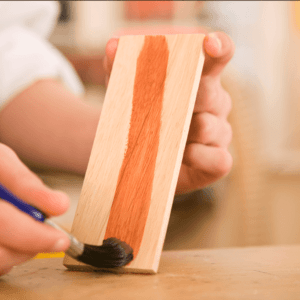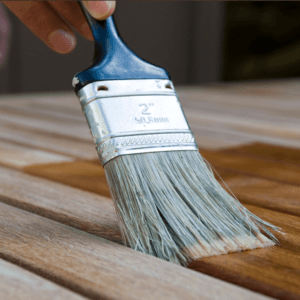If you’re like most people, you probably don’t spend a ton of time thinking about wood stains. Understandable. However, when the day comes that you decide to apply a new stain to your hardwood floors, knowing the difference can help you determine what makes the most sense. At the very least, it will save you the time you might otherwise waste at the hardware store with a somewhat dazed look on your face.
We’re going to go through the most common types of stains and their features to help you make an informed decision.
OIL WOOD STAINS
The most common type of stain, your oil-based stains are widely available in paint and hardware stores.
Can be used on: Cabinets, wood furniture, trim, molding, hardwood floors, and other woodwork.
Pros: Easy to apply, vibrant color, enriches natural wood grain.
Cons: You will need to add a clear finish after the stain has dried. Oil-based stains enhance aesthetics but offer little in the way of protection.
WATER WOOD STAINS
Where oil-based stains provide a rich, vibrant color, the color resulting from your water-based stains is typically more subdued. On the flip side, water-based stains typically have more hues available. Like paint, this type of stain is often mixed in the store.
Can be used on: Cabinets, wood furniture, trim, molding, woodwork, and accessories.
Pros: Dries quickly, easy cleanup, fewer blotches on wood due to thicker formula.
Cons: You will want to use a water-based pre-stain wood conditioner on your wood prior to applying the stain, as water-based stains will cause the fibers of the wood to swell (this is called grain raising). If this step is skipped, the appearance and texture of your wood will suffer. Additionally, water-based stains are quick to dry, so likely not the best choice for large projects, like flooring.
After the stain has been applied and dried, you will want to apply a clear finish for protection.
GEL WOOD STAINS

Can be used on: Furniture, doors, cabinets, molding, trim, woodwork, and accessories.
Pros: Doesn’t run, splatter, or drip, (great for vertical surfaces), evenly covers porous and nonporous surfaces, provides a uniform color.
Cons: Less depth added to wood, given that it doesn’t seep into the grain the way liquid stains do. Can be difficult to remove and has a tendency to gather in tight corners and crannies.
POLYSHADE WOOD STAINS
Both stain and polyurethane, polyshade stain will enrich your wood grain with deep, vibrant colors and provide the polyurethane finish you need at the same time. Two birds, one stone.
Can be used on: Furniture, doors, cabinets, woodwork, and accessories.
Pros: Acts as both stain and finish, can be applied in a single coat. No need to remove the existing finish. Gloss and satin sheens available.
Cons: Coats must be thinly applied. Will require patience to minimize bubbles and brush marks.
We hope this guide has helped. And remember, if you need more assistance picking the perfect stain for your project, don’t hesitate to reach out to Classic Wood Floors.



